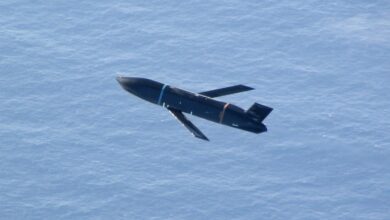China’s People’s Liberation Army (PLA) has unveiled a naval variant of its Guizhou WZ-7 drone, exhibiting some similarities with the US Navy’s MQ-4C Triton.
The new unmanned platform features Wave Transmitting Material (WTM) on the forward fuselage for beyond-line-of-sight communication on long-range missions, according to a Naval News report.
Having the WTM on the upper part of the drone would allow the antenna better satellite uplink and downlink.
Its wing roots are also fitted with electronic support measures antennas to intercept communication and radar signatures of enemy ships and execute direction-finding functions.
The WZ-7 drone variant is designed to conduct broad maritime surveillance and reconnaissance.
Familiar Appearance
Based on recent images, Beijing’s new naval high-altitude unmanned platform looks similar to the American Triton surveillance drone.
They resemble one another in their noses and the upper part of the fuselage.
However, their radars differ, as the MQ-4C features a 360-degree radar that creates an unobstructed look-down line of sight toward the ground, while the WZ-7 variant only has a front-facing radar.
This creates confusion that the Chinese platform may be a stand-off jammer designed to degrade surface combatants’ communication and radar performance.
The radar and electronic support measures suite fitted on the new drone could supplement the PLA’s intelligence, surveillance, and reconnaissance network.













